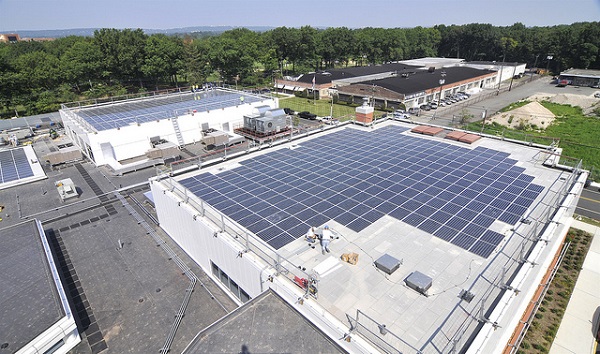You’ve got hand it to New Jersey. For a non-Sunbelt state, it kicks ass in solar power.
This is something we’ve noted before, but it deserves mention now because the state – sometime in late February – hit the 1 gigawatt mark in total installed solar electric capacity, according to the New Jersey Board of Public Utilities [PDF].
The question going forward is if New Jersey will continue to be a leader. Gov. Chris Christie thinks so.

“Reaching the 1GW of solar capacity milestone is an incredible achievement and represents New Jersey’s continued commitment to renewable energy,” Christie said in the board’s release. “It is clear that New Jersey will remain one of the largest solar energy markets in the United States.”
New Jersey trails California by a long shot in cumulative capacity installed; the Golden State had 2,902 MW as of the end of 2012. But California has the advantage of not only having a much larger population (and being just a little bit sunnier), it also has some mammoth, triple-figure-megawatt utility-scale developments that boost its total. In New Jersey, a 12.5 MW plant is about as big as they come.
Where New Jersey has shined, over the years, is in what the data-keepers call nonresidential or commercial installations – solar that goes on government, business and nonprofit buildings. The Solar Energy Industries Association and GTM Research said they found that “New Jersey was responsible for nearly one-third of the nation’s non-residential … solar installations last year. In total, more than 415 MW of solar was added to the state’s power grid in 2012, a 33 percent increase over 2011 (313 MW).”
That’s the good news. The bad news is that that industry report also noted that after a strong start to 2012, New Jersey commercial installations began to fall off in the middle of the year and never really recovered. That actually caused New Jersey to fall from No. 2 behind California to No. 3, behind Arizona, as well, in total installed capacity.
That led the Sierra Club to say that New Jersey could be doing better. On its Facebook page, the club blamed Gov. Chris Christie for New Jersey’s slackening installation pace:
(Christie) has basically gotten rid of the solar rebates in our state by eliminating the rebates for families and residents to put solar on their homes. Since taking office the Governor has taken around $720 million from the Clean Energy Fund that helps to fund renewable energy projects, yet he had no problem giving $2 billion in subsidies for natural gas plants. New Jersey needs to continue to be a leader in clean energy not the opposite!
Instead of rebates, the state has used a system of tradable solar renewable energy credits as a prime driver for new solar. The problem is that there were so many installations, especially in 2010 and 2011, that the number of credits on the market skyrocketed, causing the value of those credits to drop significantly. That made solar less attractive.
Christie did sign a bill last summer that is supposed to help, by boosting the amount of energy utilities are required to get from renewables.
The SEIA thinks that and a continued commitment to solar in New Jersey will keep the state on course.
“Although the New Jersey solar market has seen volatility, we are confident that New Jersey will continue to be a leader, both in innovating policy mechanisms to grow the industry and in installing solar to power homes and businesses,” the SEIA’s Carrie Hitt, senior vice president of state affairs, said in a statement